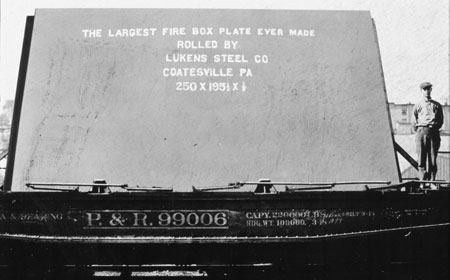
In the 1880s and 1890s, three developments changed both the local and the national rolling mill landscapes. First, a growing demand for steel, rather than iron. Steel was preferred because it was stronger than iron.
Second, the emerging preference for wider plates, which reduced the number of riveted seams in vessels. Rivets created weak points, sources of failures for boilers and ships. Companies adopted larger rolling mills to make wider plates, which reduced the number of riveted seams.
Lastly, the establishment of Worth Brothers Company, which greatly changed the local rolling landscape.

